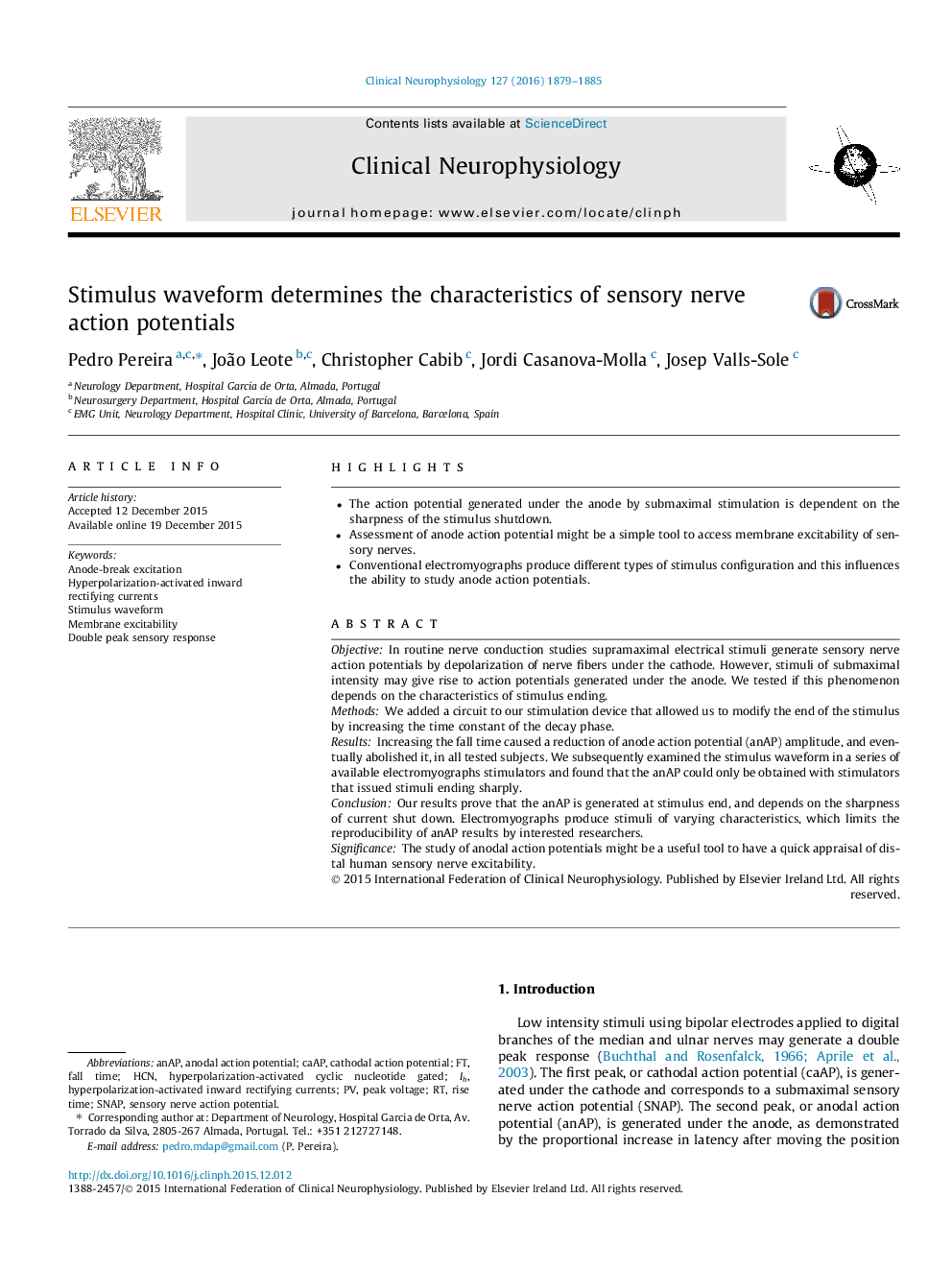| Article ID | Journal | Published Year | Pages | File Type |
|---|---|---|---|---|
| 3042901 | Clinical Neurophysiology | 2016 | 7 Pages |
•The action potential generated under the anode by submaximal stimulation is dependent on the sharpness of the stimulus shutdown.•Assessment of anode action potential might be a simple tool to access membrane excitability of sensory nerves.•Conventional electromyographs produce different types of stimulus configuration and this influences the ability to study anode action potentials.
ObjectiveIn routine nerve conduction studies supramaximal electrical stimuli generate sensory nerve action potentials by depolarization of nerve fibers under the cathode. However, stimuli of submaximal intensity may give rise to action potentials generated under the anode. We tested if this phenomenon depends on the characteristics of stimulus ending.MethodsWe added a circuit to our stimulation device that allowed us to modify the end of the stimulus by increasing the time constant of the decay phase.ResultsIncreasing the fall time caused a reduction of anode action potential (anAP) amplitude, and eventually abolished it, in all tested subjects. We subsequently examined the stimulus waveform in a series of available electromyographs stimulators and found that the anAP could only be obtained with stimulators that issued stimuli ending sharply.ConclusionOur results prove that the anAP is generated at stimulus end, and depends on the sharpness of current shut down. Electromyographs produce stimuli of varying characteristics, which limits the reproducibility of anAP results by interested researchers.SignificanceThe study of anodal action potentials might be a useful tool to have a quick appraisal of distal human sensory nerve excitability.
